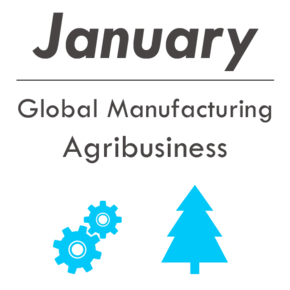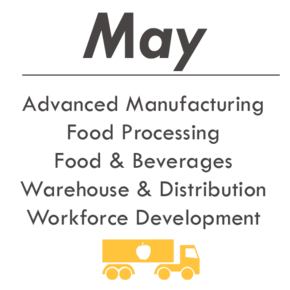Technology, innovation, and advanced manufacturing capabilities are the agents of change that you need to understand, and embrace
(American Machinist – Larry Korak: 12-23-15) The “Factory of the Future” is being built on technology, innovation, and advanced manufacturing capabilities. But what is it, exactly? And what are the technologies you need to know about to help your manufacturing company embrace the change?
The definition of the Factory of the Future is evolving; even the name is in flux. Some call it Smart Manufacturing, Industry 4.0, or the Digital Enterprise. While the terms vary, there’s one thing that is clear: The Factory of the Future is the product of fast-changing disruptive technologies hitting manufacturing like a cyclone.
Information technology and operational technology are both seeing drastic innovations, and the convergence of these two forces is creating a paradigm shift. Manufacturing is experiencing the fourth industrial revolution. Many analysts predict that the stagnation and slow recovery that followed the Great Recession will evolve into a period of expansion for manufacturers. Although margins will likely remain compressed, tools for greater savings and improved capabilities will make it easier for manufacturers to achieve profits and growth. The impact of these technologies and the Factory of the Future is growing.
IndustryWeek reports that 40% of manufacturers believe that smart manufacturing and its foundational technology—the Internet of Things—are within reach and it’s the right time to invest.
Huffington Post reports that early adopters of modern solutions that have at least partially implemented smart manufacturing initiatives have documented measurable results:
• 82% reported increased efficiency
• 49% reported lower product defects
• 45% reported customer satisfaction gains
The impact promises to grow and be even more substantial as manufacturers and their suppliers deploy technologies across the entire manufacturing landscape, from product design to supply chain logistics. Greater speed, value, innovation, and closer alignment with demanding customers will be the new normal.
Five IT Forces Driving Modernization
IT solutions are at the foundation of the Factory of the Future. New IT technologies, from cloud computing to the Internet of Things, are changing the way manufacturers do business—from the shop floor to the back office and throughout the entire value chain.
Manufacturers should consider harnessing more than one of these IT capabilities in order to fully benefit from the next generation technologies transforming manufacturing.
Value chain visibility — In order to achieve greater visibility across their value chain, manufacturers must eliminate silos and get disparate systems to communicate. After all, data is meaningless if it is stored in silos and if it lacks the full dimension of context and consequence. They need to ensure that real-time access is available to easily monitor the details of the complete manufacturing operation—within the four walls and beyond. Interoperability is the key word here; it’s a step beyond simple integration. Data must be able to be consumed in context and used for event triggers and actions. A highly flexible ERP system is the starting point for accomplishing this goal.
Mobile and social connectivity — Manufacturing leaders can’t be tethered to their offices, desks, and PCs. They walk the plant floor. They make decisions on site, in the heart of the operation. They need 24/7 access to critical data and systems from remote locations. This can range from a maintenance technician who’s checking the inventory of a spare part while repairing a critical piece of equipment, to a warehouse manager using a tablet to confirm the location of forklifts and personnel. We live on a planet with over 7.2 billion active SIM cards—that’s more mobile devices than there are human beings.
On the social front, manufacturers need to take advantage of integrated tools to capture conversations and use those to build a knowledge base and document key decisions relating to product design and customer orders. In a recent survey, 61% of CEOs said socially-enabled business processes are important to business. McKinsey Global Institute estimates suggest that by fully implementing social technologies, companies have an opportunity to raise the productivity of interaction workers—high-skill knowledge workers, including managers and professionals—by 20 to 25%.
Cloud-enabled agility — More than ever before, manufacturers are being forced to keep pace with fast-changing global trends. New markets, new customer demands, omni-channel shopping, and growing competition from start-ups are driving manufacturers to become more agile. Accelerated product launches, more product offerings, highly configured products, and additional value-add services are among the ways manufacturers strive to remain relevant and maintain or gain market share.
Cloud solutions, because they offer faster deployment and implementation, support manufacturers in these efforts. Cloud solutions allow manufacturers to easily add branches, bring on new fabricating facilities, and set up new distribution hubs without needing to invest in hardware and servers. Implementations take weeks, rather than months; and new sites can be online and producing with remarkable ease.
Analysts are reporting increased adoption of cloud solutions. A report by IDC says, “According to IDC’s 2015 Vertical IT and Communications Survey of 602 United States–based manufacturers, cloud services are at the top of manufacturers’ IT initiatives, and just over 43% of manufacturers are using public cloud and 56% are using private cloud in pilot, proof of concept, or in production. We see similar adoption rates worldwide. In fact, a majority of manufacturers worldwide are currently using public (66%) or private (68%) cloud for more than two applications, according to the respondents that qualified for IDC’s 2014 CloudView Survey.”
Data ingenuity — As gears, grease, and steam ran the manufacturing plants of the last century, today data is the force that makes modern manufacturing cost-effective. Insights derived from data analysis help manufacturers focus on markets, buying trends, customer attributes, cost of raw materials, time, labor, and operational costs, as well as details about the product in use in the market and consumer opinions. As the Internet of Things moves past today’s infancy stage, the role of Big Data will only increase. The challenge, therefore, lies not in collecting as much data as possible, but in setting a data strategy. Manufacturers need a clear roadmap for how to turn their data into meaningful actions. Data paralysis is a real threat that must be avoided.
Customer centricity — The fifth element of the Factory of the Future is perhaps the most critical. Today’s market economy has evolved into a customer-centered model that stresses speed of delivery, product value and a positive customer experience. Consumers—in nearly every industry—are highly vocal, fickle, and quick to turn elsewhere if they are disappointed. Manufacturers are not exempt from dealing with easily outraged customers who are willing to share their complaints about a product or service with hundreds of thousands of “close friends” on social media. Modern customer relationship management (CRM) solutions, collaborative tools, online portals, and product configuration abilities all help to provide customers with a positive experience. Warranty management and after-market service abilities also help to enhance value after the point of sale.
Operating Technologies for the Future
Operational technology is also a vital part of the Factory of the Future blueprint. Shop floor production, fabrication, assembly, automation, material handling, logistics, scheduling, and labor tracking are all operational elements that are receiving careful scrutiny from manufacturers looking to improve their efficiency.
Faced with extremely thin margins and volatile supply chain costs, manufacturers are increasingly turning to operational processes for improvements in efficiency and productivity. In many cases, manufacturers have already cut the typical excesses out of their budgets. Their workforce is lean. They’ve eliminated non-essential projects and perks. And they have little control over market prices and competing vendors. This leaves operational tactics as the best way to control shop floor costs and improve profitability.
Here are five operational technologies that are helping to propel manufacturing:
Robotics — Robotics are becoming more and more import to manufacturers that are looking to control costs and improve accuracy in highly dangerous or difficult conditions. The last several years have seen a sharp resurgence in orders of industrial robots, roughly tripling in the wake of the Great Recession. The global robotic systems market (including software peripherals and other related costs) is estimated to reach $41 billion by 2020, according to Allied Market Research.
According to Time, online retail powerhouse Amazon recently demonstrated its faith in using robotics for warehousing operations when it purchased Kiva Systems for $775 million and announced plans to roll out 10,000 robots into a network of warehouses, a move which it says will realize fulfillment cost-savings of up to $900 million— or up to 40% savings on cost per order.
Product innovation and product configuration tools — To meet customer demand for highly personalized products, manufacturers are turning to product configuration tools. These tools help manufacturers manage the complexity of design variations, product quotes and production specifications. Integration with online portals and CAD solutions allow customers to visualize designs, adding to the positive customer experience—while also improving accuracy and speeding the quote-to-cash cycle.
Production innovation has been greatly enhanced by 3D printing. Additive manufacturing has made prototyping and design of new products much easier, quicker, and more economical. Manufacturers are gradually finding applications for additive manufacturing that go beyond experimentation—and that instead are relevant, practical, and profitable. According to a recent Innovations Survey, two-thirds of manufacturers are already adopting 3D printing. The study also estimates that the global 3D printer market will reach $6 billion by 2017 (up from $2.2 billion in 2012).
Closed-loop quality control — Manufacturers are using automated quality control methods to help control consistency and brand value. Consumers have little tolerance for unexpected variations. Manufacturers are learning they can deploy sensors and monitoring devices at numerous checkpoints in the production cycle—rather than only at final stage inspection to help detect noncompliance issues early and minimize waste.
Late stage assembly — As customers are increasingly demanding engineer–to-order (ETO) and made-to-order (MTO) products, manufacturers are turning to delayed assembly or late-stage assembly to help them manage this mass consumerization trend. By designing products in interchangeable modules, components can be manufactured and inventoried while the manufacturer waits for an order. When the order is received—either at the retail outlet, online portal, or through a channel partner—the product is assembled with the appropriate details and accessories, and drop shipped to the customer.
A similar concept is distributed manufacturing where the raw materials and methods of fabrication are decentralized, and the final product is manufactured very close to the final customer. Distributed manufacturing is a growing trend, like reshoring, where manufacturers, their suppliers, and subcontractors work to form the right combination of proximity to customer and a productive location. Cloud deployment supports this agility and “pop up” manufacturing movement by letting manufacturers deploy systems in a matter of weeks, not months or years.
IoT-aided logistics supply chain management — The Internet of Things (IoT) will undoubtedly impact many aspects of manufacturing. Supply chain management and logistics seem to hold some of the greatest potential. Already scanners, bar codes, and GPS tracking are being used to monitor the movement of goods in the warehouse and on trucks to customers. A recent survey indicated that:
• 35% of manufacturers currently collect and use data generated by smart devices to enhance manufacturing/operating processes, and an additional 17% plan to do so in the next three years;
• 38% currently embed sensors in products that enable end-users/customers to collect sensor-generated data, with an additional 31% planning to do so in the future;
• 34% believe it is “extremely critical” for U.S. manufacturers to adopt an IOT strategy.
This is an exciting time for manufacturers. Economic recovery and global growth point to optimism on the horizon. The Factory of the Future is right around the corner. The most important take-away is that manufacturers need to start now in order to remain competitive in the new manufacturing paradigm. A wait-and-see attitude is highly risky, putting companies in danger of losing market share to an existing competitor or a start-up with a low-cost alternative product.
Manufacturers’ ERP system is the foundation upon which they can build the Factory of the Future. They need an ERP system that has a flexible architecture so the solution can expand along with their company, and they can easily integrate specialized applications such as CRM solutions or product configuration tools to meet their changing needs.
Manufacturers also need to consider their deployment options for the disruptive technologies that will help shape the Factory of the Future. Cloud deployment is the great enabler for solutions like Big Data and the Internet of Things. Cloud deployment offers the agility and storage needed to fully incorporate the vast amount of sensor data, customer account data, product history, and expense data needed to be proactive and in-tune with customer expectations.
(Larry Korak is the Director of Industry Strategy Direction, Industrial Manufacturing at Infor, a developer of enterprise software ranging from financial systems and resource planning to supply chain and customer relationships.)




